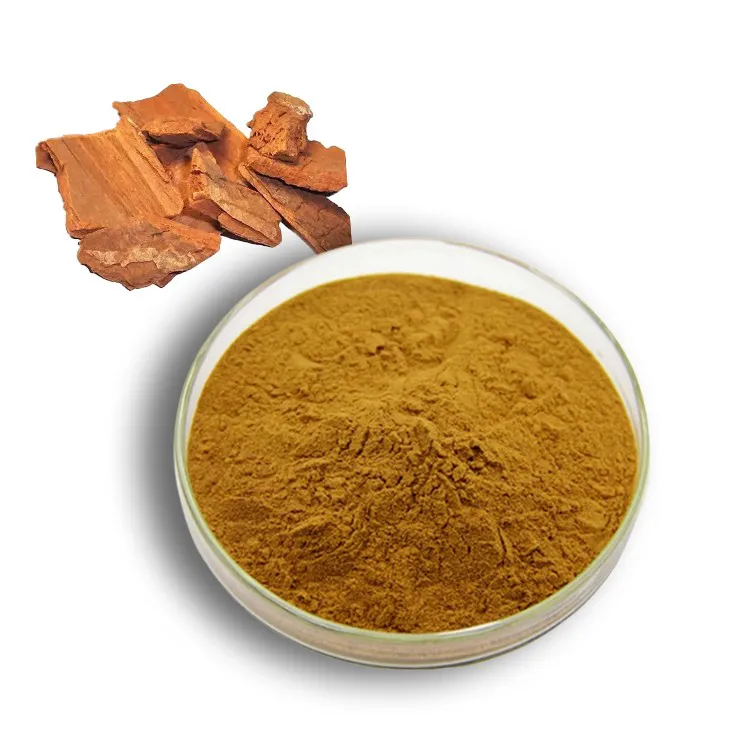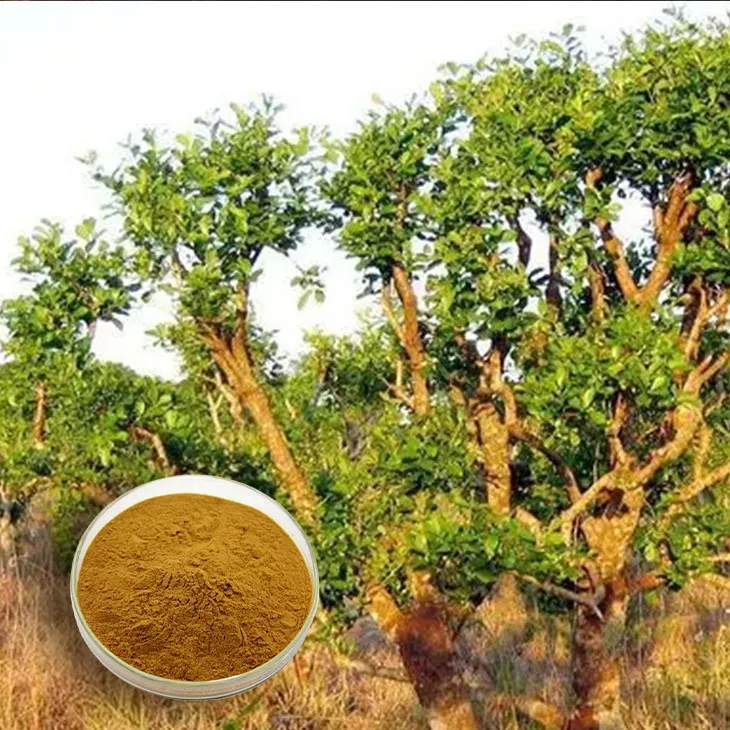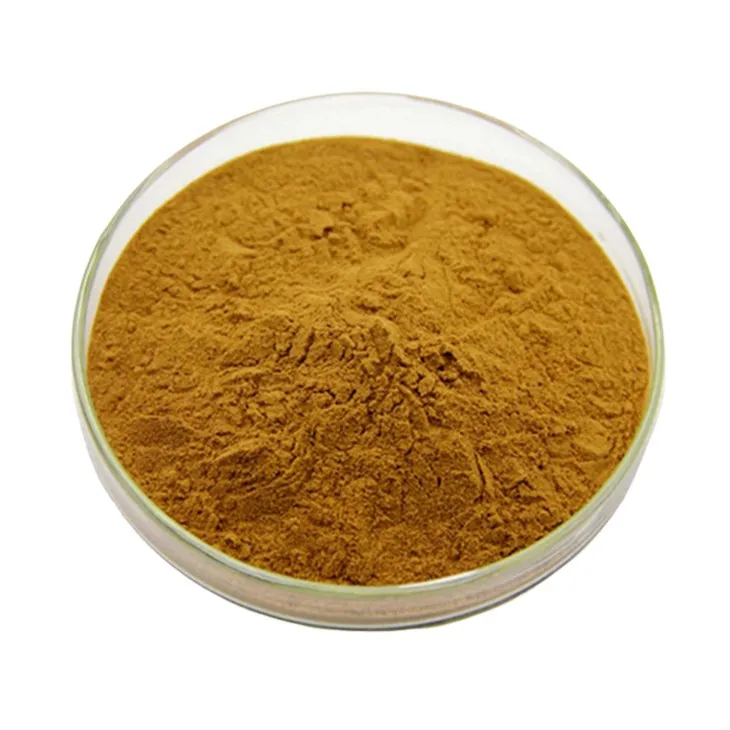- 0086-571-85302990
- sales@greenskybio.com
Extract Yohimbine Bark Extract by Using Natural Wood Log Method.
2024-11-27

1. Introduction
The extraction of Yohimbine Bark Extract using the natural wood log method is a complex yet fascinating process that combines both art and science. Yohimbine, a natural alkaloid, has various applications in the fields of medicine, pharmaceuticals, and herbal remedies. The natural wood log method offers a unique approach to obtaining this valuable extract in a more sustainable and natural way.

2. Sourcing of Natural Wood Logs
Sustainable Sourcing: The first and crucial step in this extraction process is the sourcing of natural wood logs. Sustainable sourcing is not only beneficial for the environment but also ensures the long - term availability of the raw material. Logs should be obtained from well - managed forests where reforestation programs are in place. This helps in maintaining the ecological balance and biodiversity of the forest ecosystems.
When selecting the logs, certain criteria need to be considered. The species of the tree should be one that is known to have a high concentration of yohimbine in its bark. For example, the Pausinystalia johimbe tree is a well - known source of yohimbine. Additionally, the age of the tree can also affect the yohimbine content. Older trees may have a higher concentration, but sustainable harvesting practices should ensure that younger trees are also allowed to grow and mature.

3. Separation of the Bark
Once the suitable logs are obtained, the next step is the precise separation of the bark. This is a delicate process as it requires careful handling to avoid any damage to the bark, which could potentially lead to a loss of the yohimbine content.
There are different techniques that can be used for bark separation. One common method is manual peeling, which is often preferred for small - scale operations. However, for larger - scale extraction, mechanical methods may be more efficient. In mechanical peeling, specialized machinery is used to carefully remove the bark from the log. The thickness of the bark removed should be optimized to ensure maximum yohimbine extraction while minimizing waste.

4. The Extraction Process
4.1 Maceration
Maceration is a key step in the extraction of Yohimbine Bark Extract. This process involves soaking the separated bark in a suitable solvent. The choice of solvent is critical as it should be able to effectively dissolve the yohimbine without causing any chemical reactions that could alter its properties.
Common solvents used in maceration for yohimbine extraction include ethanol and water - based solutions. During maceration, the bark tissues are gradually broken down, allowing the yohimbine to be released into the solvent. This process may take several hours to days, depending on various factors such as the temperature, the particle size of the bark, and the concentration of the solvent.
To enhance the maceration process, gentle agitation can be applied. This can be achieved through mechanical stirring or by simply shaking the container at regular intervals. Agitation helps in increasing the contact between the bark and the solvent, thereby facilitating a more efficient release of the yohimbine.
4.2 Filtration
After the maceration process is complete, the next step is filtration. Filtration is essential for removing any impurities that may have been present in the bark or that were released during the maceration process.
There are different types of filtration methods that can be used. One common method is gravity filtration, where the macerated solution is passed through a filter paper or a porous membrane. This allows the liquid, which now contains the dissolved yohimbine, to pass through while retaining the solid impurities. Another method is vacuum filtration, which is more efficient and can be used for larger - volume extractions. In vacuum filtration, a vacuum pump is used to create a pressure difference, which speeds up the filtration process.

5. Advantages of the Natural Wood Log Method
Reduced Use of Synthetic Chemicals: One of the major advantages of the natural wood log method for yohimbine extraction is the reduced use of synthetic chemicals. In many other extraction methods, harsh chemicals may be used, which can not only be harmful to the environment but also may leave behind residues in the final extract. The natural wood log method, on the other hand, primarily uses natural solvents such as ethanol, which is relatively safer and more environmentally friendly.
Retention of Natural Properties: This method also has the advantage of retaining the natural properties of yohimbine. Since the extraction process is more natural and less invasive compared to some chemical - intensive methods, the yohimbine extract obtained is more likely to have its full range of natural biological activities intact. This is especially important for applications in herbal medicine and natural health products where the integrity of the natural compound is highly valued.
Potential for Higher - Quality Extract: The natural wood log method has the potential to yield a higher - quality extract compared to some other methods. The careful selection of logs, precise bark separation, and natural extraction processes all contribute to obtaining an extract with a higher concentration of yohimbine and fewer impurities. A higher - quality extract can be more effective in its intended applications, whether it is for treating certain medical conditions or for use in the cosmetic industry.
6. Challenges and Considerations
Despite its many advantages, the natural wood log method for yohimbine extraction also faces some challenges.
Seasonal Variations: The yohimbine content in the bark can vary depending on the season. For example, the concentration may be higher during certain times of the year. This means that the timing of log harvesting needs to be carefully considered to ensure maximum yohimbine yield. However, this can be a challenge as it may not always be possible to harvest logs at the optimal time due to various factors such as weather conditions and forest management regulations.
Quality Control: Ensuring consistent quality of the Yohimbine Bark Extract can be a challenge. Variations in the raw material, such as differences in the species of the log, the age of the tree, and the growing conditions, can all affect the quality of the extract. Additionally, the extraction process itself needs to be carefully monitored and controlled to ensure that the final product meets the required standards.
Scalability: While the natural wood log method may be suitable for small - to medium - scale extraction operations, scaling it up for large - scale industrial production can be difficult. The processes involved, such as sustainable log sourcing, precise bark separation, and natural extraction techniques, may be more difficult to implement on a large scale without sacrificing quality or environmental sustainability.
7. Conclusion
The extraction of yohimbine bark extract using the natural wood log method is a promising approach that offers several advantages in terms of environmental sustainability, retention of natural properties, and potential for high - quality extract production. However, it also faces challenges that need to be addressed, such as seasonal variations, quality control, and scalability. With further research and development, it is possible to overcome these challenges and make this method more widely applicable in the production of yohimbine bark extract for various industries.
FAQ:
What is the importance of sustainable sourcing of logs in yohimbine bark extract extraction?
Sustainable sourcing of logs is crucial in yohimbine bark extract extraction because it helps in environmental conservation. By ensuring that the logs are sourced sustainably, we can protect the forests and the ecosystems they are part of. This also ensures the long - term availability of the raw material for the extraction process.
How does maceration contribute to the extraction of yohimbine bark extract?
Maceration is an important step in the extraction of yohimbine bark extract. It helps in breaking down the bark tissues. By doing so, it effectively releases the yohimbine content present in the bark. This makes it easier to extract the yohimbine from the bark.
Why is filtration necessary in the extraction of yohimbine bark extract?
Filtration is necessary in the extraction of yohimbine bark extract as it helps in removing any impurities. After the maceration process, there may be unwanted substances in the extract. Filtration ensures that these impurities are removed, resulting in a cleaner and purer yohimbine bark extract.
What are the advantages of the natural wood log method over other extraction methods?
The natural wood log method has several advantages over other extraction methods. It reduces the use of synthetic chemicals, which is beneficial for maintaining the natural properties of yohimbine. Also, it has the potential to yield a higher - quality extract compared to some other methods.
How is the bark separated from the logs in the extraction process?
The bark is separated from the logs with precision during the extraction process. However, the specific method for this separation may vary depending on the equipment and techniques used. It is important that the separation is done carefully to ensure the quality of the bark for the subsequent extraction steps.
Related literature
- Yohimbine: A Review of its Pharmacology, Toxicology and Therapeutic Applications"
- "The Extraction and Characterization of Bioactive Compounds from Natural Sources: A Focus on Yohimbine Bark"
- "Sustainable Extraction of Natural Products: The Case of Yohimbine from Wood Logs"
- ▶ Hesperidin
- ▶ citrus bioflavonoids
- ▶ plant extract
- ▶ lycopene
- ▶ Diosmin
- ▶ Grape seed extract
- ▶ Sea buckthorn Juice Powder
- ▶ Beetroot powder
- ▶ Hops Extract
- ▶ Artichoke Extract
- ▶ Reishi mushroom extract
- ▶ Astaxanthin
- ▶ Green Tea Extract
- ▶ Curcumin Extract
- ▶ Horse Chestnut Extract
- ▶ Other Problems
- ▶ Boswellia Serrata Extract
- ▶ Resveratrol Extract
- ▶ Marigold Extract
- ▶ Grape Leaf Extract
- ▶ blog3
- ▶ blog4
-
The best olive leaf extract in nature.
2024-11-27
-
Cordyceps extract suppliers.
2024-11-27
-
Chinese aguaje extract powder manufacturers.
2024-11-27
-
Honeysuckle pollen of the best quality.
2024-11-27
-
Chinese Senna Leaf Extract Suppliers.
2024-11-27
-
Organic Dandelion Root Extract, Australia.
2024-11-27
-
The best bitter gourd extract in 2024.
2024-11-27
-
The best baicalin in nature.
2024-11-27
-
Chinese lily extract manufacturers.
2024-11-27
-
Citrus Aurantii Extract
2024-11-27
-
Beetroot Powder
2024-11-27
-
Echinacea Extract
2024-11-27
-
Lotus leaf extract
2024-11-27
-
Beta Carotene
2024-11-27
-
Nettle Root Extract
2024-11-27
-
Black Rice Extract
2024-11-27
-
Grape Leaf Extract
2024-11-27
-
Stevia Extract
2024-11-27
-
Lemon Juice Powder
2024-11-27





















